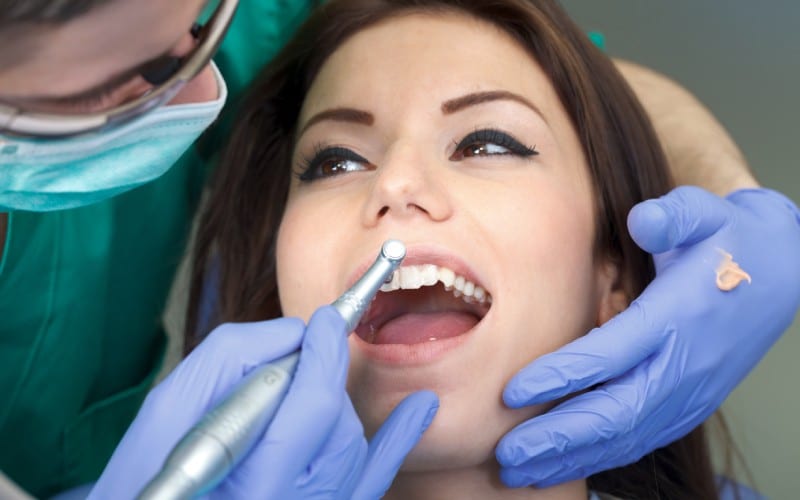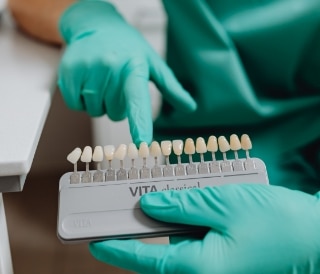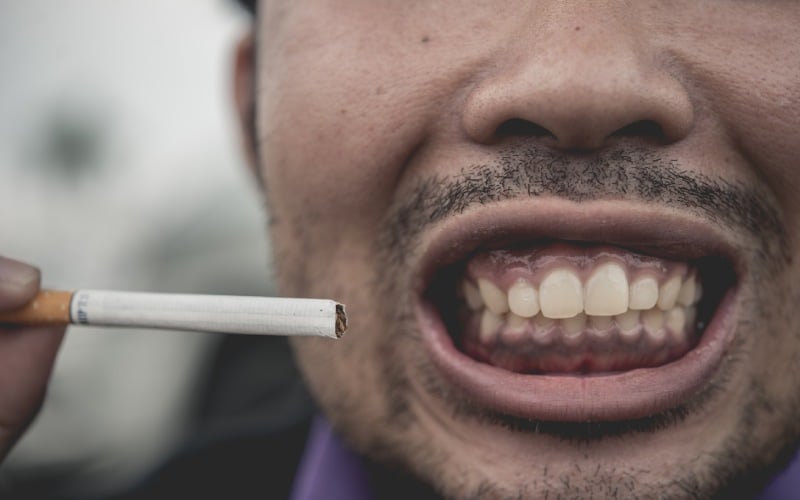Ever wonder what goes on during a professional teeth cleaning? It's not just about getting those teeth to sparkle; it's a crucial fight against tooth decay and gum disease. Your dentist or dental hygienist is your ally in maintaining oral health, effectively removing tartar and plaque from every nook and cranny.
Understanding the teeth cleaning process can demystify the experience and highlight its importance. Whether you're due for a routine visit or considering increasing your dental appointments, this article will walk you through what happens in that dentist's chair. Let's dive into the world of professional teeth cleaning and see how it keeps your smile healthy and bright.
Key Takeaways
Preparation: Before the cleaning begins, the dental hygienist will review your dental and medical history, ensuring they understand any relevant health issues or concerns you may have.
- Initial Examination: The hygienist will examine your teeth and gums, checking for any signs of oral health issues such as cavities, gum disease, or abnormalities.
- Plaque and Tartar Removal: Using specialized tools, the hygienist will carefully remove plaque and tartar buildup from the surfaces of your teeth. This process helps prevent gum disease and tooth decay.
- Scaling and Polishing: After removing plaque and tartar, the hygienist will perform scaling to remove any remaining deposits and then polish your teeth to remove surface stains and leave them smooth and shiny.
- Flossing and Fluoride Treatment: Flossing helps remove plaque and food particles from between your teeth, promoting gum health. Additionally, a fluoride treatment may be applied to strengthen tooth enamel and prevent cavities.
- Oral Health Education: Throughout the cleaning process, the hygienist will provide guidance on proper brushing and flossing techniques, as well as tips for maintaining good oral hygiene at home.
- X-Rays and Additional Assessments: Depending on your individual needs and oral health status, X-rays or other diagnostic tests may be performed to assess the health of your teeth, gums, and jawbone.
- Follow-Up Recommendations: After the cleaning, your dentist may recommend follow-up appointments for further treatment or preventive care, such as dental sealants or fluoride treatments.
- Personalized Care Plan: Based on the findings of the cleaning and examination, your dental team will develop a personalized care plan to address any oral health issues and help you maintain a healthy smile.
- Importance of Regular Cleanings: Regular dental cleanings are essential for maintaining good oral health and preventing common dental problems such as cavities, gum disease, and bad breath. Aim to schedule a cleaning every six months or as recommended by your dentist.
What Is Dental Cleaning?
The Importance of Dental Cleaning
Dental cleanings are essential procedures that go beyond just keeping your smile aesthetically pleasing. They are crucial for maintaining both your oral hygiene and overall health. Professional teeth cleaning, performed by dentists or dental hygienists, aims to remove plaque and tartar that regular brushing and flossing at home can't eliminate. This not only prevents tooth decay and bad breath but also protects against periodontal diseases, which have been linked to heart disease and stroke.
- Reduces the risk of cavities by meticulously removing plaque.
- Prevents gum disease through the eradication of tartar buildup.
- Halts the progression of existing oral health issues by thorough cleaning and examination.
- Helps maintain the natural appearance of your teeth by polishing and removing superficial stains.
Regular deep dental cleanings go a step further, addressing the areas beneath the gum line, thus playing a pivotal role in the treatment and prevention of more severe gum diseases.
The Frequency of Dental Cleaning
The frequency of dental cleanings is not one-size-fits-all. Those with a higher risk of dental diseases benefit from more frequent cleanings. Here's what patients typically experience:
- Low-risk patients may find that visiting the dentist every six months is sufficient to maintain oral health.
- High-risk patients might need appointments every three or four months.
Remember, staying consistent with your dental cleaning appointments is an investment in your health that can stave off more significant and costlier problems down the line. Your dental team will equip you with a tailored cleaning schedule, ensuring you maintain the healthiest smile possible.
Tools and Techniques Used by Dentists During Teeth Cleaning
Professional teeth cleaning is not merely a cosmetic endeavour; it's integral to maintaining your oral health. You're familiar with the toothbrush and floss, but when you visit the dentist for a teeth cleaning, they'll utilize specialized tools and techniques that are far more effective at removing stubborn plaque and tartar.
Dental Scaler
Your dentist or hygienist employs a dental scaler – a handheld instrument critical to the teeth cleaning process. Its main function is to manually remove plaque and tartar. These tools are often crafted from metal and are meticulously designed to reach the tiny gaps and recesses of your mouth that regular brushing can miss.
- Their use of scalers provides comprehensive cleaning, preventing potential gum disease and tooth decay.
- Scalers come in various shapes and sizes to conform to different tooth surfaces.
- The technique involves gentle to moderate pressure to scrape away tough deposits without harming your enamel.
When the scaler is in action, you'll notice the precision with which your dental professional cleans each individual tooth, ensuring that even the most persistent bits of plaque are eradicated.
Ultrasonic Scaler
An upgrade from the manual scaler is the ultrasonic scaler, featuring a tip that vibrates at a high frequency to break down larger tartar deposits. This advanced tool combines vibration with a water spray to flush out debris smoothly from your teeth and gums. It's particularly effective at cleaning below the gum line and between teeth – areas that can be breeding grounds for bacteria.
- Ultrasonic scalers can remove hard calculus quickly and with minimal discomfort.
- They cause a sensation which may feel strange, but it's typically not painful.
- The tip of the ultrasonic scaler appears sharp but is designed to dislodge calculus without cutting the tissue.
Polishing Tools
Once the scaling is complete, your teeth are polished to remove any residual biofilm and minor stains. This is an important phase as it makes the surface of your teeth smooth, which hinders the accumulation of plaque. Your dental professional will use a soft rubber cup and a prophylactic paste that contains an abrasive material – usually pumice – to polish each tooth.

- Polishing not only contributes to a brighter smile but also prevents future plaque build-up.
- Modern polishing tools may use a ProphyJet, which cleans with pressurized air and water mixed with an abrasive powder.
- This procedure is generally followed by flossing to ensure a thorough clean, especially in the interdental regions.
By understanding the tools and techniques your dentist uses during a teeth cleaning session, you're more likely to appreciate the importance of professional dental care. Armed with this knowledge, you can approach your next appointment with confidence, knowing that these specialized procedures are designed to keep your oral health optimal. Remember, these cleanings complement your daily dental routine and are crucial for catching potential issues before they escalate.
Step-by-Step Process of Dental Cleaning
Assessment and Examination of the Teeth
Your dental appointment kicks off with an assessment. A dental hygienist first takes a close look at your teeth and gums for any signs of gingivitis or other concerns. They'll inspect under your tongue, around your neck, and feel for abnormalities, ever vigilant for indications of oral cancer. Using a small mirror, they'll examine your teeth for decay, review your previous dental work, and check that everything's in order.
Removal of Plaque and Tartar
Next up, the removal of plaque and tartar begins. The hygienist employs a scaler, a handheld device, to meticulously scrape away these undesirable guests from your teeth. Regardless of the presence of braces, the process is thorough, albeit a bit longer for those with orthodontic appliances. In particularly stubborn cases, an ultrasonic scaler might be used, its vibrations coupled with a water spray to break down larger deposits efficiently.
Dental Flossing
Once the hard-to-reach tartar is banished, it's time for Dental flossing. Here's where every nook and cranny between your teeth is targeted. The hygienist uses expert techniques, and a floss threader if necessary, to slide beneath any braces wires, ensuring no particle of plaque is left behind. This step is crucial for disrupting and removing plaque formations, deterring gum disease, and maintaining oral hygiene in the hidden recesses of your mouth.
Teeth Polishing
Following the floss, your teeth will undergo polishing. This phase employs a special gritty toothpaste and an electric brush to give your teeth a glossy, clean look. This not only elevates the aesthetic of your smile but also plays a vital part in removing any lingering stains or biofilm, reducing future plaque accumulation and gently caring for your enamel.
Application of Fluoride
Lastly, you may receive a fluoride treatment. This final step aims to protect your teeth by fighting off bacteria and reinforcing your enamel, effectively helping to prevent cavities. The fluoride preparation, often flavoured for a pleasant experience, serves as a protective barrier until your next dental visit, working tirelessly to keep decay at bay.
Remember, the proceedings of your cleaning visit may vary slightly depending on individual oral health needs but generally adhere to these meticulous steps ensuring your smile is both healthy and sparkling.
Benefits of Regular Teeth Cleaning
Prevention of Tooth Decay
When you regularly schedule teeth cleaning appointments, you're taking a crucial step towards preventing tooth decay. Dental plaque, which is a sticky film of bacteria, consistently forms on your teeth. If not removed, it produces acids that erode tooth enamel and create cavities. During professional cleanings, your dentist or hygienist removes this plaque, and also the hardened plaque called tartar, which can't be removed by brushing alone. This significantly lowers your risk of cavities and helps maintain healthy teeth.
Prevention of Gum Disease
Gum disease, often starting as gingivitis, can progress to periodontitis, a more serious infection that can lead to tooth loss. By attending regular dental cleanings, the risks of these conditions are greatly reduced. Professional cleaning involves removing build-up from your teeth and below the gumline, helping to prevent the infections that cause gum disease. Studies show that professional cleanings can lead to improved gum health, resulting in a decrease in pocket depth and a lessened risk of gum disease progression.
Fresher Breath
Bad breath, or halitosis, can be more than just embarrassing—it may indicate a deeper oral health issue. Regular teeth cleanings help to remove the particles of food and bacteria that contribute to bad breath. When your teeth are free of plaque and tartar, and your gums are healthy, you're less likely to suffer from persistent bad breath. Keeping up with your dental appointments ensures that any potential causes of bad breath are addressed timely, helping you maintain fresh breath and a healthier mouth.

Brighter Smile
Who doesn't want a sparkling smile? Over time, your teeth can become stained from foods, drinks, and tobacco. Professional cleanings can remove many of these surface stains, letting your natural whiteness shine through. Moreover, during a cleaning session, your dentist polishes your teeth, resulting in a smoother surface that's less likely to retain stains. It’s not just about looks—removing these stains can prevent plaque from accumulating as easily, contributing to overall oral health. Regular maintenance is the key to preserving a well-maintained appearance of your teeth.
Maintaining the health of your teeth through routine cleaning is a key component of your overall well-being. Don’t underestimate the power of a healthy mouth—it's a window to your general health and can affect your confidence and quality of life.
What to Expect During a Dental Cleaning Appointment
Visiting the dentist's office for a dental cleaning appointment is a key step in maintaining your oral health. Here's an outline of what typically happens during this routine but essential visit.
Cleaning Duration
Dental cleanings usually last between 30 minutes to an hour, depending on a variety of factors, such as the amount of tartar and plaque buildup and the overall health of your gums and teeth.
Potential Discomfort
While most dental cleanings are painless, some may experience discomfort, especially if there's significant tartar buildup or sensitive gums. However, your dental professional will take steps to ensure your comfort throughout.
Post-Cleaning Care Instructions
After your cleaning, the dental staff will often provide you with specific post-care instructions to maximize the benefits of the procedure.
Looking to Schedule a Dental Cleaning?
Prioritize your oral health with regular dental teeth cleanings at Toronto Smile Centre for optimal oral health. Contact us at 416-636-6730 or visit 1394 Wilson Ave Toronto, Ontario, Canada M3M 1H8.
FAQS
Does a dental cleaning hurt?
- Most people do not experience pain during a dental cleaning. You may feel some discomfort or sensitivity, especially if you have gum disease or sensitive teeth. However, your dental hygienist will take steps to minimize any discomfort, such as using a local anesthetic or adjusting the pressure of the instruments.
Are there any side effects or aftercare instructions following a dental cleaning?
- It's normal to experience some minor side effects after a dental cleaning, such as slight gum tenderness or tooth sensitivity. These symptoms usually resolve within a day or two. Your dental hygienist may recommend avoiding certain foods or drinks immediately after the cleaning and maintaining good oral hygiene habits at home, including regular brushing and flossing.
Will my dental insurance cover the cost of a dental cleaning?
- Many dental insurance plans cover the cost of regular dental cleanings as part of preventive care. However, coverage may vary depending on your specific plan and provider. It's essential to check with your insurance company to understand your coverage and any out-of-pocket expenses you may incur.

Priyanka Choudhary, DDS, is a distinguished dentist in Toronto with extensive experience in dentistry, focusing on implants and general care. Beginning her career with a BDS from SGT Dental College in India in 2010, she expanded her credentials with a DDS from the University of Western Ontario in 2019. Dr. Choudhary also completed an Implant Residency in 2022 and is currently enhancing her expertise through a Mini MBA at York University, anticipated in 2024. Renowned for her advanced dental techniques and compassionate care, she actively contributes to her field through continuous education and participation in industry events. Beyond her professional endeavors, Dr. Choudhary enjoys gardening and exploring Toronto's cultural sites with her family, reflecting her nurturing nature and community engagement.






